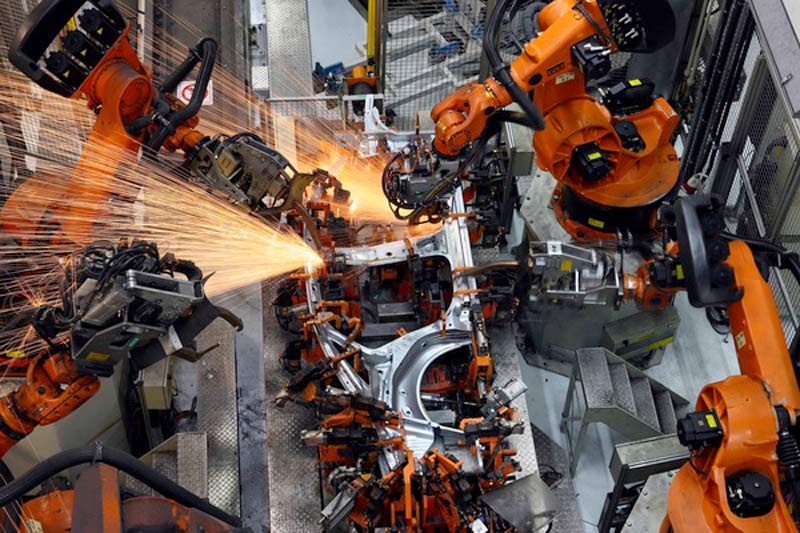Spanish Auto Makers Persevere in Face of Eurozone Woes
Despite shrinking sales and production, auto makers assigned several new models to their Spanish plants last year. They find the country attractive in part because of its flexible labor structure and regulations.

MADRID – Vehicle sales in Spain fell 12% and production tumbled 18.2% through the first 10 months of 2012 compared with prior-year, owing to the prolonged recession that has boosted the country’s unemployment to more than 25% and shaved 3% from the gross domestic product.
Weak overseas markets led to a 20.3% decline in exports in January-October, to 1.46 million units.
However, Mario Armero, executive vice president of ANFAC, the domestic vehicle manufacturers association, notes that despite the shrinking numbers, auto makers assigned several new models to their Spanish plants last year.
Plans for Spain by auto makers include:
Nissan is investing €210 million ($262.5 million) in three of its Spanish plants. Some €100 million is earmarked for production of the electric version of its NV200 light-commercial vehicle at Barcelona. The auto maker is spending another €100 million on its light- and medium-duty truck factory near Madrid; and €10 million for its casting and machining plant in Cantabria.
Ford last month launched exports of the second-generation Kuga cross/utility vehicle, the first of 15 new models included in the U.S. auto maker’s European restructuring strategy, The Kuga is built at Ford’s Almufasses plant, where production of the next-generation Transit Connect begins this year. The auto maker is investing more than €1.11 billion ($1.44 billion) in the two vehicle programs.
Renault in November agreed to a 10-year investment program under which none of its Spanish employees will be laid off. The plan will make it possible to manufacture more than 400,000 vehicles annually at the auto maker’s Valladolid and Palencia assembly plants, plus 1.4 million engines at Valladolid and an equal number of transmissions at its Seville facility.
Fiat Chairman Sergio Marchionne said in June that the auto maker would transfer production of Iveco trucks from Ulm, Germany, to Madrid. He also announced €500 million ($655.5 million) in investments in Fiat’s Spanish facilities from second-half 2012 through 2013.
Volkswagen is considering a €785 million ($1.03 billion) investment in its Landaben plant, near Pamplona, to produce the next-generation Polo.
As an auto assembler, Spain has overcome disadvantages such as higher logistics costs. These are a result of Spain being Europe’s second-most mountainous country behind Switzerland; its location on the western end of the continent; and rail width only now being made consistent with railroads throughout the rest of the European Union.
Other seeming weaknesses have not steered auto makers away from making substantial investments in Spain, the EU’s second-biggest car producer since surpassing France in 2009.
Eurostat, the EU’s statistics-keeping agency, says labor costs in the country increased 8.9% from 2006 to 2011, compared with 7.5% in France and 6.9% across the entire eurozone. The attraction may lie within Spain’s unique labor structure and regulations.
The Employment Regulation Files (ERE, for its Spanish acronym) scheme allows companies to adjust working hours to production; the goal is to safeguard those jobs by preventing their employer from closing down.
Two variants commonly used within the auto industry are called suspension ERE and reduced workday ERE. In these cases, workers lose their total salaries or the salary corresponding to the hours the workday is reduced. They eventually receive unemployment insurance from funds collected by the Spanish government through monthly fees paid by employees and employers.
The ERE program helps auto makers avoid costly inventory increases when sales fall and allows them to retain skilled workers. In some cases, auto makers supplement the unemployment benefits with funds of their own, in effect leaving furloughed workers with 80% of their normal salary.
Spanish unions, which are supported not by members’ fees but by the federal government, some years ago accepted differing salary scales for older and younger people in the same company, similar to the 2-tier wage structure in contracts between the United Auto Workers and Canadian Auto Workers unions and Ford, Chrysler and General Motors.
About the Author
You May Also Like